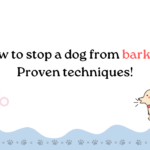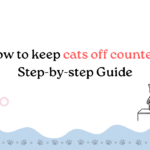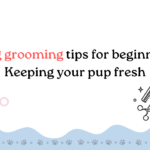The Best Fluffy Pancakes recipe you will fall in love with. Full of tips and tricks to help you make the best pancakes.
Why grooming matters for your dog
Before diving into the how-to, let’s talk about why grooming is so important. Regular grooming isn’t just about making your dog look good—it’s about their health. It prevents matting, reduces shedding, and keeps skin issues at bay. Plus, it’s a chance to spot fleas, ticks, or abnormalities early. For beginners, starting small and building a routine will make the process easier for both you and your pup.
Ready to get started? Here are some essential dog grooming tips for beginners to set you on the right path.
Step-to-step guide to keep them fresh
Gather the right tools
One of the first steps in grooming your dog is having the proper tools. You don’t need a professional kit right away, but a few basics will make a big difference. Here’s what every beginner should have:
- Brush: Choose one based on your dog’s coat type (slicker brush for long hair, bristle brush for short hair).
- Comb: Great for detangling and finishing touches.
- Dog-safe shampoo: Avoid human products—they can irritate your dog’s skin.
- Nail clippers or grinder: Look for guillotine-style clippers or a quiet grinder for beginners.
- Towels and a blow dryer: A low-heat setting works best for dogs.
- Ear cleaner and cotton balls: For gentle ear maintenance.
Investing in quality tools upfront saves time and frustration. Keep them in a handy spot so grooming feels less like a chore.
Start with brushing: The foundation of grooming
Brushing is the cornerstone of dog grooming tips for beginners because it’s simple and effective. It removes loose hair, dirt, and prevents mats from forming—especially in breeds like Golden Retrievers or Poodles. Here’s how to do it right:
- Brush before bathing: Wet mats are harder to untangle, so brush first.
- Go with the grain: Follow the direction of hair growth to avoid discomfort.
- Be gentle: Start with short sessions if your dog is fidgety, rewarding them with treats.
For short-haired breeds like Beagles, a weekly brush might suffice. Long-haired dogs may need daily attention. Pro tip: Use this time to check for fleas or skin irritation.
Master the art of bathing
Bathing your dog can be messy, but it’s a skill every beginner can learn. Aim to bathe your dog every 4-6 weeks unless they roll in something funky. Here’s a step-by-step approach:
- Prep the space: Use a tub or sink with a non-slip mat. Keep shampoo and towels within reach.
- Use lukewarm water: Too hot or cold can stress your pup.
- Lather up: Massage the shampoo in, avoiding the eyes and ears.
- Rinse thoroughly: Leftover soap can irritate their skin.
- Dry off: Towel dry first, then use a low-heat blow dryer if your dog tolerates it.
First-timers might find a handheld sprayer helpful for rinsing. Keep it fun—talk to your dog soothingly and reward them after.
Tackle nail trimming with care
Nail trimming is often the scariest part of grooming for beginners, but it’s crucial. Overgrown nails can cause pain or affect your dog’s gait. Here’s how to approach it:
- Start slow: Let your dog sniff the clippers and give treats to build trust.
- Trim small bits: Cut just the tip, avoiding the quick (the pink part with blood vessels).
- Use a grinder: If clippers intimidate you, a grinder smooths nails gradually.
- Have styptic powder handy: It stops bleeding if you accidentally nick the quick.
Trim every 2-3 weeks, depending on how fast your dog’s nails grow. If you’re unsure, ask a vet to show you the first time.
Clean those ears
Ear cleaning is an overlooked but vital part of grooming. Dogs with floppy ears, like Basset Hounds, are prone to infections if neglected. Follow these steps:
- Check for dirt: Look inside the ear for wax or debris—don’t go too deep.
- Use a cleaner: Squirt a vet-approved solution into the ear canal, then massage the base.
- Wipe gently: Use a cotton ball to clean the outer ear.
Avoid Q-tips—they can push gunk further in. Clean ears monthly or as needed, and watch for signs of trouble like redness or odor.
Brush their teeth for fresh breath
Dental care might not scream “grooming,” but it’s a game-changer for your dog’s health. Plaque buildup can lead to serious issues down the road. Here’s how beginners can start:
- Get dog toothpaste: Human toothpaste is toxic to dogs—opt for poultry or peanut butter flavors.
- Use a finger brush: It’s less intimidating than a toothbrush for newbies.
- Go slow: Let your dog lick the paste first, then rub it on their teeth.
Aim for 2-3 times a week. It’s a small effort with big rewards—like avoiding costly vet dental cleanings.
Know when to call a pro
As a beginner, it’s okay to leave some tasks to professionals. Complex cuts (think Poodle trims) or severe matting might need a groomer’s touch. Watch for these signs:
- Aggressive resistance: If your dog won’t cooperate, don’t force it.
- Skin issues: Redness or sores need a vet or groomer’s expertise.
- Thick mats: Cutting them out yourself can risk injury.
A pro can also teach you tricks to improve your at-home routine.
Tips for success and common mistakes to avoid
- Stay calm: Dogs pick up on your energy. If you’re relaxed, they’ll be too.
- Make it positive: Treats, praise, and patience turn grooming into a treat for your pup.
- Stick to a schedule: Consistency builds trust and keeps your dog looking sharp.
- Over-bathing: Too many baths dry out your dog’s skin. Stick to the 4-6 week rule.
- Skipping brushing: It’s tempting to jump to the bath, but brushing prevents bigger problems.
- Rushing the process: Take your time—hurrying can stress your dog or lead to mistakes.
Grooming your dog is a skill that gets better with practice. Start with one task—like brushing—then add more as you feel comfortable. Watch YouTube tutorials or ask your vet for pointers. Before you know it, you’ll be grooming like a pro—and your dog will thank you with wagging tails and cuddles.
With these dog grooming tips for beginners, you’re well on your way to keeping your pup clean, healthy, and happy.
It’s not about perfection—it’s about care and connection. Gather your tools, start small, and enjoy the process. Have a tip that worked for you? Share it with fellow beginners in the comments below—because every dog deserves to feel their best!




